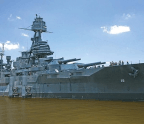
The attack boats quietly protect the bombers as they leave and enter a port, they politely ‘hunt’ their adversary through the sonar orchestra of sub-surface noise – the trick is to ‘go silent’ and reduce all noise. Every day throughout the year, ballistic missile submarines from China, the United States, Russia, France and the United Kingdom drift along the seabed waiting for an adversary to launch an act of nuclear aggression. These huge submarines remain at sea for long periods of months – the only people aboard who know where the boat is are the Captain and his command team. They are permanently on operations, avoiding contact with surface ships and never surfacing – they are their country’s most secret military assets.
For the US Navy and the Royal Navy, the nuclear deterrent is based around the Trident II D5 missile. The system is currently deployed aboard the US Navy’s Ohio ballistic-class submarines and Royal Navy’s Vanguard-class boats. These weapons are carried when the boats deploy on patrol to in a role known as the the Continuous at sea Deterrent (CASD) every day of the year. Trident is a three-stage, solid-fuelled submarine-launched ballistic missile. Since its introduction, the Trident D5 has undergone extensive improvement programs, including a more accurate global positioning system. The US Navy began developing the Trident D5 in March 1980. The first test launch took place in January 1987 and the first sea trial, which was unsuccessful, occurred in March 1989. The Trident D5 entered service in 1990 replacing the Polaris missile system which had entered service with the US Navy in 1961. Each submarine was armed with 16 missiles, powered by two solid-fuel stages. Polaris was also selected by the UK government and in service with the Royal Navy from 1968 to 1996 after a decision was made to build a new generation of UK submarines and assign the nuclear deterrent to the Navy.
The deterrent had been maintained by the RAF carried by the Vulcan bombers. But increases in radar and surface to air missiles made it clear that bombers were increasingly vulnerable to attack and would be unlikely to






